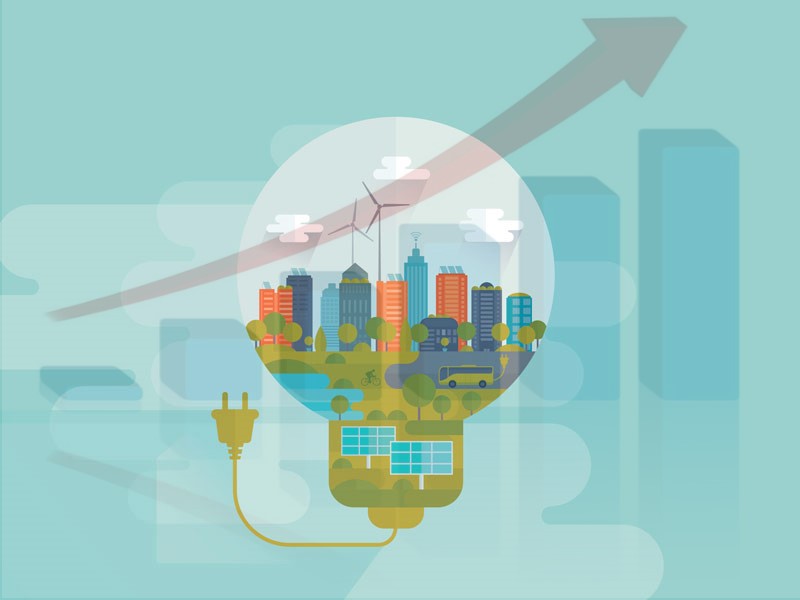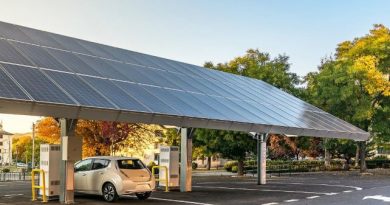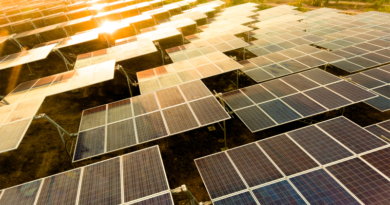Woodmac Report: Off-Grid Energy Funding in ‘Exciting’ Space
Africa may be a recent entrant in the race towards the renewables but that hasn’t stopped it from becoming one of the leaders in attracting investments for its off-grid network, a new Wood Mackenzie Power & Renewables report highlights. That could open up a big opportunity for Indian firms to earn from these new markets.
 The next big thing in Renewables-Off Grid Power
The next big thing in Renewables-Off Grid Power
The next big billion-dollar business opportunity in the renewable sector will come from Off-grid energy, says the new report from Wood Mackenzie Power & Renewables and Energy4Impact. The report detailing the spectacular rise in investment in the off-grid energy access sector says that is becoming the next massive investment opportunity for the world’s biggest energy players, with hundreds of millions of dollars going into solar home systems and other energy solutions. That Africa is the lead market makes it even more interesting, since a significant proportion of the investments will come in as grants or concessional loans from global multilateral agencies too. That means, a relatively safe credit risk opportunity for vendors looking to expand to these markets.
From nearly nothing prior to 2010, spending on the category — which includes businesses that sell solar panels to power lights, cellphones and other household devices, up to microgrids that power entire communities — rose to a total of nearly $1.7 billion at the end of 2018. More than $1.2 billion of that was invested since 2016. In 2018, annual investment in the sector broke the $500 million mark.
Year-on-year transaction volume grew 37 percent from 2016 to 2017, and total capital composition by volume shifted to over 50 percent debt, indicating a willingness on the part of investors to scale up. In 2018, total transaction volumes grew another 22 percent, average equity investments doubled, and debt increased more than five fold compared to the previous year.

What’s more, the share of strategic investment in the sector is on the rise — from oil and gas majors like Shell and Total, European utilities like Engie and EDF, and energy technology providers like Schneider Electric, to name some of the big names.
At the end of 2018, the report tallied $383 million spent on more than 110 direct strategic investments in off-grid energy. An additional $461 million in strategic funding has reached the sector via indirect fund investments. And while roughly 25 percent of this corporate funding has come through corporate social responsibility initiatives and other sources not tied to the underlying business, the remaining 75 percent is commercial in nature, Ben Attia, Wood Mackenzie Power & Renewables analyst and lead author of the report, noted.

“There are a billion customers that have no access to electricity, and another billion that have access to unreliable electricity,” he said, citing data from sources including the World Bank and the International Monetary Fund. Companies that can serve them “have the opportunity to own the next billion customer relationships — and that includes all their evolving needs and all their data.”
Attia added that Overall, the solar home system market has raised more than $1.1 billion through 2018. Some of the biggest, in terms of capital raised through the end of 2018, include Zola Electric (formerly Off Grid Electric) with $261 million, M-Kopa Solar with $194 million, D.Light with $188.5 million, Lumos with $108 million, Greenlight Planet with $82 million, and Mobisol with $79 million.

Attia also pointed out that the concentration of investment among energy access companies, many of them competing in the same markets, presents short-term risks for the parties involved. Concentration is apparent in several ways. For instance, the report finds that the top 10 deals represent $564 million, or one-third of total investment to date.
There’s also geographic concentration. Of the regions covered by the report, Africa drew nearly 80 percent of the total capital raised, compared to about 15 percent for India and Southeast Asia and about 5 percent in Latin America. These low showings are largely due to the presence of large-scale public programs that limit the market for private off-grid solutions, compared to Africa, where the ubiquity of “mobile money” payment systems has allowed private-sector players to compete more effectively. Besides of course the remarkably poor transmissions infrastructure, that discourages the establishment of large scale generation projects even today.

Wood Mackenzie’s report also tracks investment in the so-called “mini-grid” sector — a category meant to differentiate the smaller-scale projects involved from the broader world of “microgrids,” which can include big industrial, commercial and government facilities. The report tracked $190 million raised through the end of 2018 in the top 10 mini-grid companies, including $45 million for Powerhive, $30 million for Starsight, $29 million for Husk, and $28 million for Yoma Micro Power.
(Picture credit: Woodmac.com)




